Related Research Articles

The Staatliches Bauhaus, commonly known as the Bauhaus, was a German art school operational from 1919 to 1933 that combined crafts and the fine arts. The school became famous for its approach to design, which attempted to unify individual artistic vision with the principles of mass production and emphasis on function.

The International Style or internationalism is a major architectural style that was developed in the 1920s and 1930s and was closely related to modernism and modernist architecture. It was first defined by Museum of Modern Art curators Henry-Russell Hitchcock and Philip Johnson in 1932, based on works of architecture from the 1920s. The terms rationalist architecture and modern movement are often used interchangeably with International Style, although the former is mostly used in the English-speaking world to specifically refer to the Italian rationalism, or even the International Style that developed in Europe as a whole.
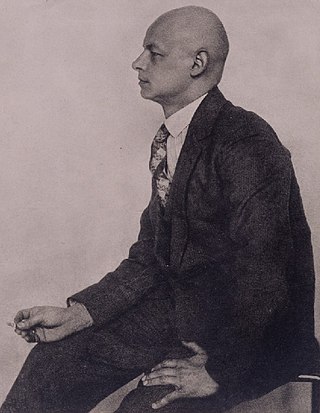
Oskar Schlemmer was a German painter, sculptor, designer and choreographer associated with the Bauhaus school.

The Neue Galerie New York is a museum of early twentieth-century German and Austrian art and design located in the William Starr Miller House at 86th Street and Fifth Avenue in New York City. Established in 2001, it is one of the most recent additions to New York City's famed Museum Mile, which runs from 83rd to 105th streets on Fifth Avenue in the Upper East Side of Manhattan.

Max Bill was a Swiss architect, artist, painter, typeface designer, industrial designer and graphic designer.
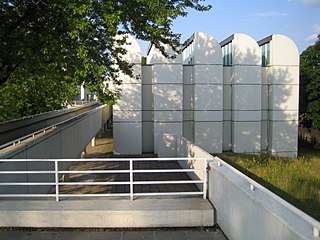
The Bauhaus Archive is a state archive and Museum of Design located in Berlin. It collects art pieces, items, documents and literature which relate to the Bauhaus School (1919–1933), and puts them on public display. Currently, the museum is closed due to construction works and will reopen in 2022. It has a temporary space at Knesbeckstr. 1–2 in Berlin-Charlottenburg.
Triadisches Ballett is a ballet developed by Oskar Schlemmer. The ballet became the most widely performed avant-garde artistic dance and while Schlemmer was at the Bauhaus from 1921 to 1929, the ballet toured, helping to spread the ethos of the Bauhaus.

Willi Baumeister was a German painter, scenic designer, art professor, and typographer. His work was part of the art competitions at the 1928 Summer Olympics and the 1932 Summer Olympics.
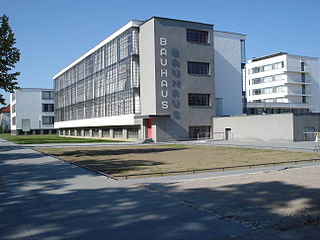
Bauhaus Dessau, also Bauhaus-Building Dessau, is a building-complex in Dessau-Roßlau. It is considered the pinnacle of pre-war modern design in Europe and originated out of the dissolution of the Weimar School and the move by local politicians to reconcile the city's industrial character with its cultural past.
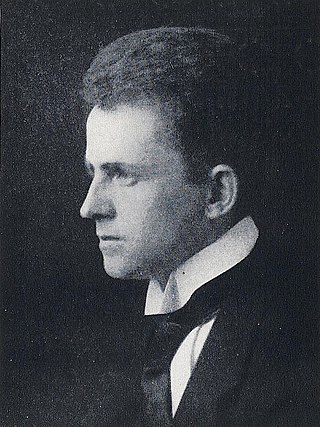
Lothar Schreyer was a German artist, writer, editor, stage designer and gallery owner. He was the first Master of the stagecraft workshop at the Bauhaus art school.
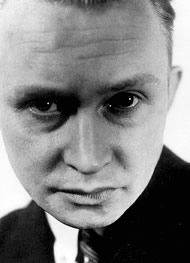
Georg Muche was a German painter, printmaker, architect, author, and teacher.

Marg Moll was a German sculptor, painter and author.

Will Grohmann was a German art critic and art historian specialized in German Expressionism and abstract art. He was known as the "godfather of modernism".
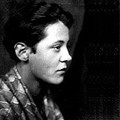
Alma Siedhoff-Buscher, born Alma Buscher, was a German designer. She trained at the Reimann School in Berlin, the Unterrichtsanstalt des Kunstgewerbemuseums Berlin and the Bauhaus.

Alexander Schawinsky, known as Xanti Schawinsky was a Swiss painter, photographer and theatre designer. An alumnus of the Bauhaus, Schawinsky belonged to Bauhaus founder and architect Walter Gropius' social circle.
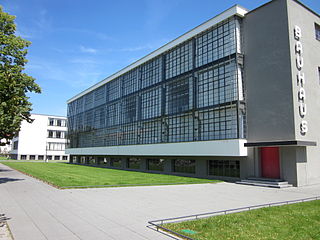
Bauhaus and its Sites in Weimar, Dessau and Bernau is a World Heritage Site in Germany, comprising six separate sites which are associated with the Bauhaus art school. It was designated in 1996 with four initial sites, and in 2017 two further sites were added.
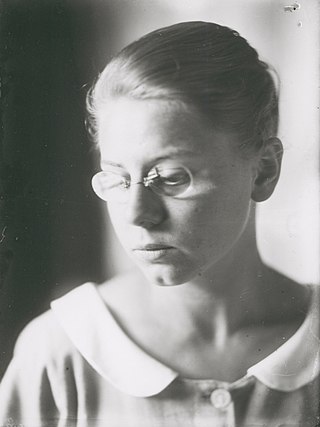
Lou Scheper-Berkenkamp née Hermine Luise Berkenkamp was a German painter, colour designer, the avant-garde author of children's books, fairy-tale illustrator and costume designer.

Bauhaus Stairway, or in German, Bauhaustreppe, is an oil painting by German artist Oskar Schlemmer, completed in 1932. It depicts the Bauhaus school, a German art school that closed in 1933, due to the Nazis' taking power. It is on display at the Museum of Modern Art, in New York. The portrait depicts students ascending the stairs at the Bauhaus school, with all but one walking away from the viewer.
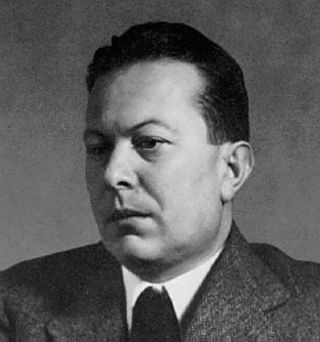
Farkas "Wolfgang" Ferenc Molnár (1897–1945) was a Hungarian architect, painter, essayist, and graphic artist. He is associated with the first generation of Bauhaus movement, and was active in Budapest.

The Württembergischer Kunstverein Stuttgart was founded in 1827 and is one of the oldest art associations in Germany. The association, which today has around 3,000 members, is based in the Kunstgebäude Stuttgart and is dedicated to communicating contemporary art. The curator and publicist Martin Fritz has been the chairman of the Württembergischer Kunstverein, which belongs to the Arbeitsgemeinschaft Deutscher Kunstvereine (ADKV), since 2018.
References
- ↑ Robinson, Jacqueline (1997). Modern dance in France: an adventure, 1920-1970. Taylor & Francis. p. 41. ISBN 9789057020162.